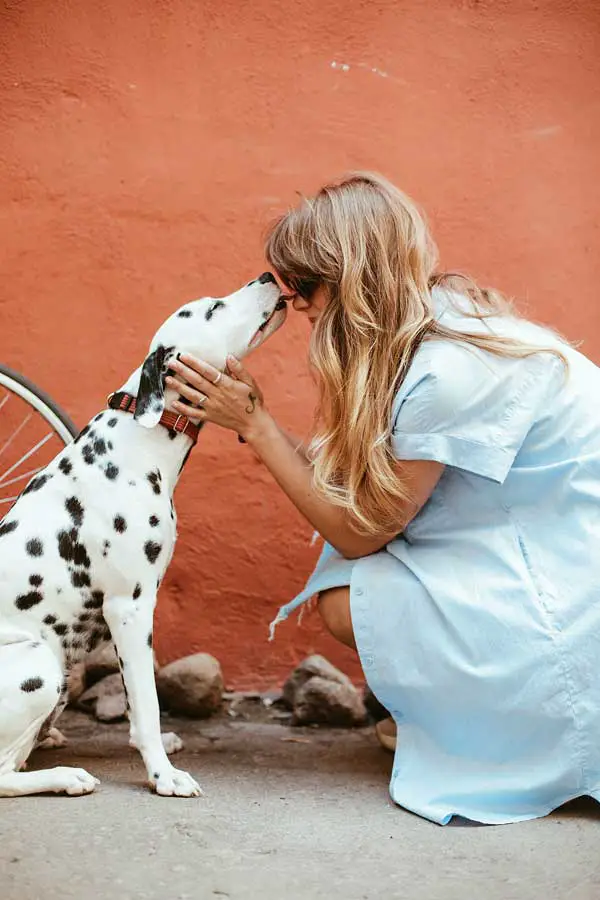Labrador vs. Dalmatian: Which one is better Family Dog
For the inclusion of a canine in your family, you have many options to choose from. But, selecting from a lot of varieties also tend to become confusing. Labrador Retrievers are quite common as pet dogs all over the world. Similarly, some dog lovers are mesmerized with the attractive coat of a Dalmatian.
Who will be a better family companion: a Labrador or a Dalmatian? Both Labradors and Dalmatians have a fantastic personality and are excellent as accompaniments. Some characteristics are common in both. They also possess some distinguishing features, which gives them their unique quality and enhances their identity.
Comparing and contrasting a Labrador and a Dalmatian
Since both are quite popular, intelligent, and active, they are ideal for family dogs. For identifying the common as well as differentiating features of a Labrador and a Dalmatian, the below-mentioned points, will help you get a clear picture of the same. Before you plan to expand your family with a pet dog, you must also be aware of their origin and background. It will help you understand their features and the hereditary characters that helped them evolve as the present-day breed.
Ancestral Background
A Dalmatian’s origin traces back to Croatia, which has an ancient region called Dalmatia, hence the name of the breed. Reports suggest that Dalmatians are a result of breeding between English Pointers and a spotted Great Dane. On the other hand, a Labrador has its origin in a cultural region within the Canadian province of Labrador and Newfoundland.
As per records, a Labrador was previously not even larger than the size of an English Pointer. Dalmatians were useful as carriage protectors from bandits and other intruders and were usually the pets of wealthy merchants. Labradors were useful for waterfowling, where they helped in retrieving fishes that escaped back into the water.

Appearance
Being a large-sized breed, Dalmatians have a muscular build with around 23 inches in height. A Labrador is a medium-large breed and reaches a height of 22 inches for both males and females. Some of their features which distinguish them from each other are as follows:
Coat:
Dalmatians have a spotted coat that does not appear since birth, but after a few days. These spots are of different sizes ranging from 20mm to 60 mm. The coat is short but dense and sheds almost throughout the year.
A Labrador, too has a short and dense coat, but the coat is double-layered. The upper or topcoat sheds and becomes thinner during the summers. Similarly, in chilly winters, it grows back and becomes thicker along with the undercoat. Thus, the coat of a Labrador helps in temperature regulation of the body.
Colour:
Black spots are most common; however, they can also rarely be greyish-blue, mosaic, or orange shade in a Dalmatian. In contrast, Labradors usually possess three colors. Some are black, while others may be yellow or chocolate. Black Labrador Retrievers are most commonly available due to the dominant character of the color black in their genes.
Weight:
A Dalmatian weighs from 45-70 pounds. But a Lab is muscular and has a higher body weight than a Dalmatian. It weighs around 50-80 pounds. Most labs are massive because they are prone to obesity.
Personality and temperament
One of the essential factors that need consideration is the temperament of a pet dog. If you are looking for a pet dog to expand your family, make sure your breed is comfortable mingling with multiple people other than you. Some of the personality traits of both kinds are as follows:
Active:
Both Dalmatians and Labradors are energetic and have a cheerful nature. They prefer engaging in outdoor activities regularly to channelize their energy. Since both of their backgrounds term them as working dogs, they need to engage in some activities to keep them away from boredom.
Independence:
Labradors are more independent dogs than Dalmatians. They prefer engaging in their regular tasks and can manage themselves without the interference of their human parents. Dalmatians, too like their independence, but they require their companion’s attention and cuddling. They show more affection toward their pet parents.
Intelligence:
Being working dogs both have intelligence qualities in them. With adequate training, Labradors can quickly respond to commands and are useful for people with old age or disabilities.
Socializing:
Labradors require social training from a young age to engage themselves when left alone for a long time. Loneliness may often lead to distress, which in due course may turn into separation anxiety. In the case of Dalmatians, social training from a younger age helps them encourage their ability to handle children and strangers. In the absence of social interaction, they may sometimes show aggressive behavior.
Relationship with others:
Although both of them are responsive towards early training, Labradors are better companions for people with disabilities, old age, blindness, or autism. They are also good with children, but noisy children can make them feel anxious if not trained to handle them. Dalmatians are excellent family dogs, especially to guard their human family from strangers.

Response towards training
A Labrador and a Dalmatian both are quite intelligent and readily respond to training. It is advisable to train them from an early age so that they can quickly adapt to the rules followed at home. If you are bringing an older pet home, make sure you start their training as soon as possible. Both of them quickly adapt to a new environment, but like humans, they too will need some time to adjust.
- If you have older parents at home or someone is physically disabled, make sure you provide a Labrador specialized training from professionals or training schools to accompany their human family. They are excellent therapy dogs. Labradors respond to the training sessions positively, and you may begin with command and obedience training.
- Early socialization will help to respond to neighbors in a better manner, especially for Dalmatians.
- Regular exercise is essential for both of them as they are highly active breeds. Since Labradors are fond of eating, daily physical activities ensure they are not prone to gain bodyweight. For Dalmatians, exercise or any other activities will help them distract from any destructive behavior by releasing extra energy from the body.
Health issues suffered by Dalmatians and Labradors
Just like humans, all kinds of dog breeds are also prone to specific health issues. Some health problems are hereditary, while others may be due to some injuries suffered during a young age, which reflects while attaining maturity or old age.
- Labradors are prone to obesity in the absence of a healthy diet and regular exercise. They also suffer from various hereditary issues mostly related to abnormalities in hip and elbow joints. Although rare, some are prone to eye infections and autoimmune diseases. It is advisable to adopt a Labrador only after eight weeks of age.
- Likewise, Dalmatians during their lifetime may suffer from hip and elbow dysplasia, which makes them unable to walk correctly and also specific skin allergies. Deafness is another severe issue in them.
Caring and Maintenance
Since both of them have short but dense hair, they also require regular brushing of the coat.
- Labradors shed twice a year some may shed throughout the year. Regular brushing will help in extracting dead hair stuck in between. Secondly, it will also help you to minimize the mess that shedding causes in the house.
- Dalmatians, too, shed throughout the year, but not as excessive as a Labrador. Use a mild shampoo for both of them to ensure they remain hygienic and free from germs that usually stick in the coat while playing outdoors.
Make sure that their nails of paws are clean and trim them regularly, to avoid infections in the skin while scratching. Both breeds require essential but basic grooming and maintenance. However, since Labradors shed a bit more, you need to be careful to clean up the house frequently.
Diet
Like all other breeds, both Dalmatians and Labradors require a healthy and balanced diet. Since they are highly energetic breeds, you will have to make sure they receive a sufficient amount of nutrients in every meal.
- A healthy diet will help them grow and develop in terms of the physical structure and mental stimulation. At the same time, choose a dog food to ensure that it contains fatty acids for healthy skin and coat.
- However, you will need to maintain a strict diet for Labradors. They like to eat, and if not kept a check on their regular food habits, they may tend to gain body weight. So, it is essential to seek a doctor’s advice and follow a diet chart for Labradors to prevent them from obesity.
Both Labradors and Dalmatians are excellent family dogs, and many dog lovers prefer them throughout the world. You must adopt a dog instead of purchasing from a pet store and give the rescued pets a happy and healthy lifestyle. Make sure to follow all the requirements that each of them deserves, respectively. If you are looking for a pet with a specific purpose of work, Labradors are better. Dalmatians are preferable as guarding companions. Both have some similarities and different features, and selecting one is a personal choice of the pet parent.







